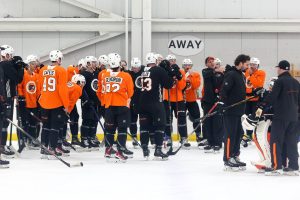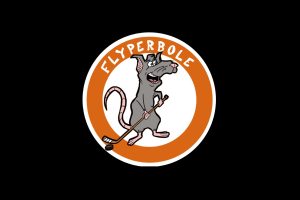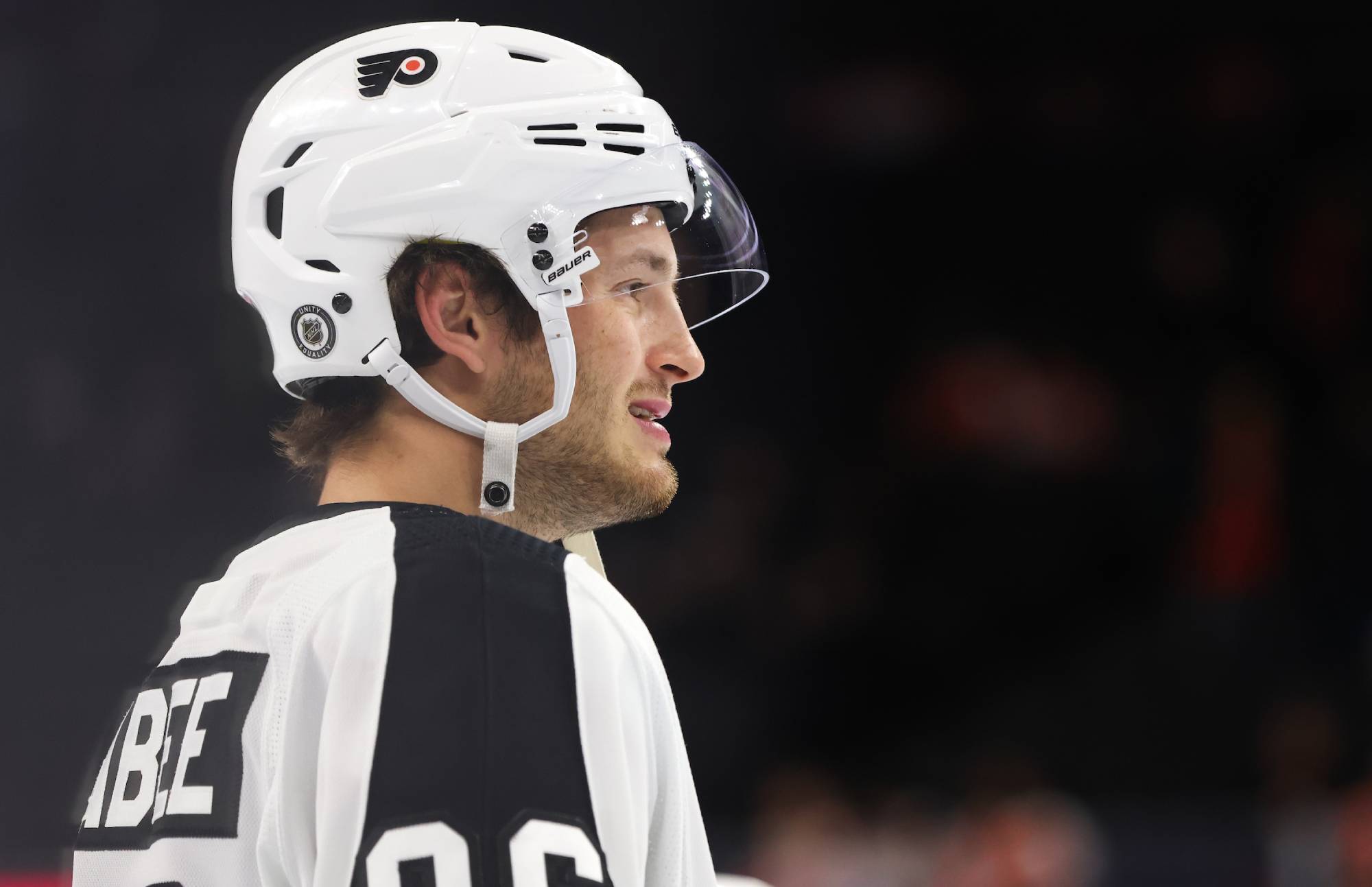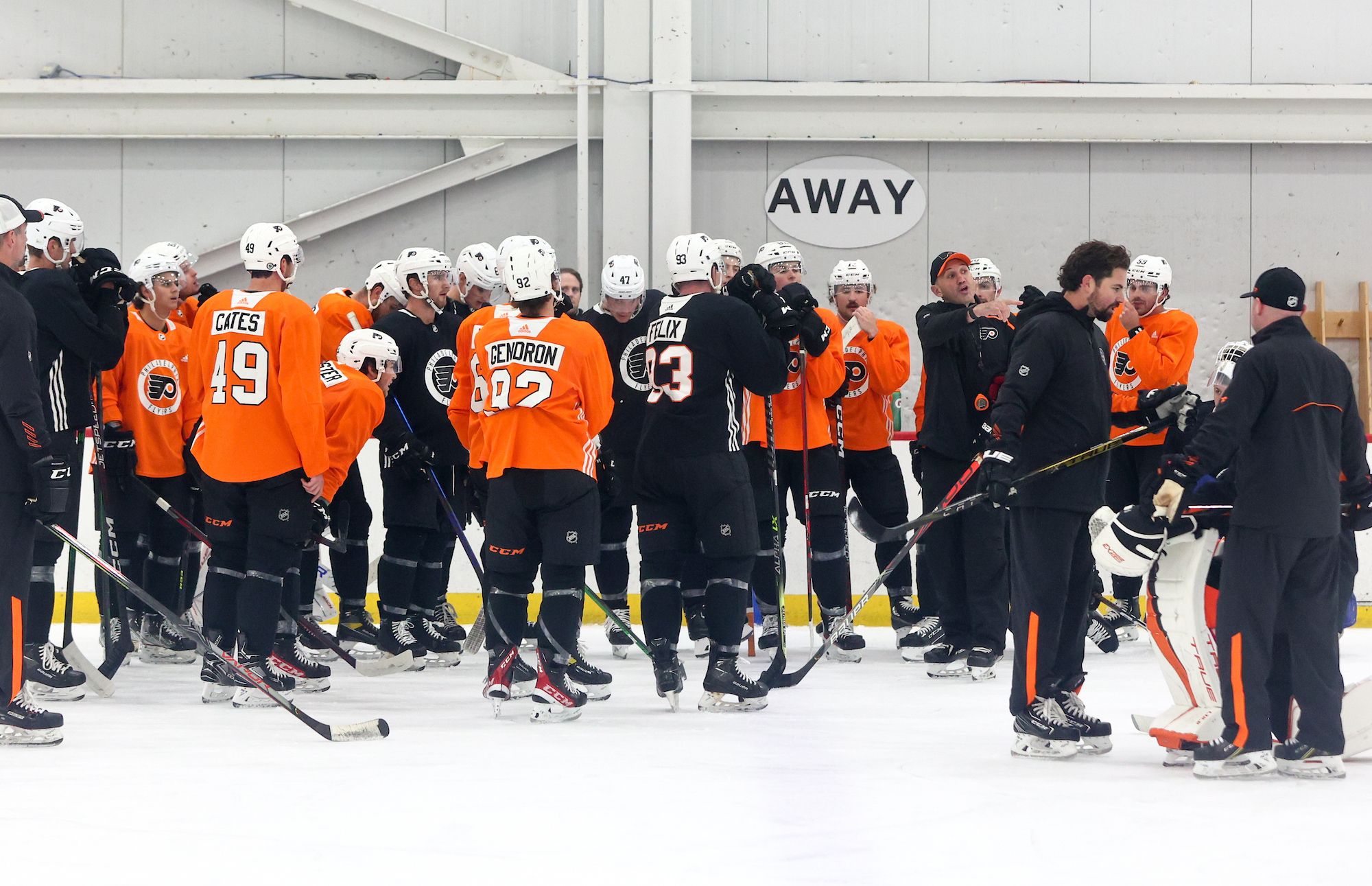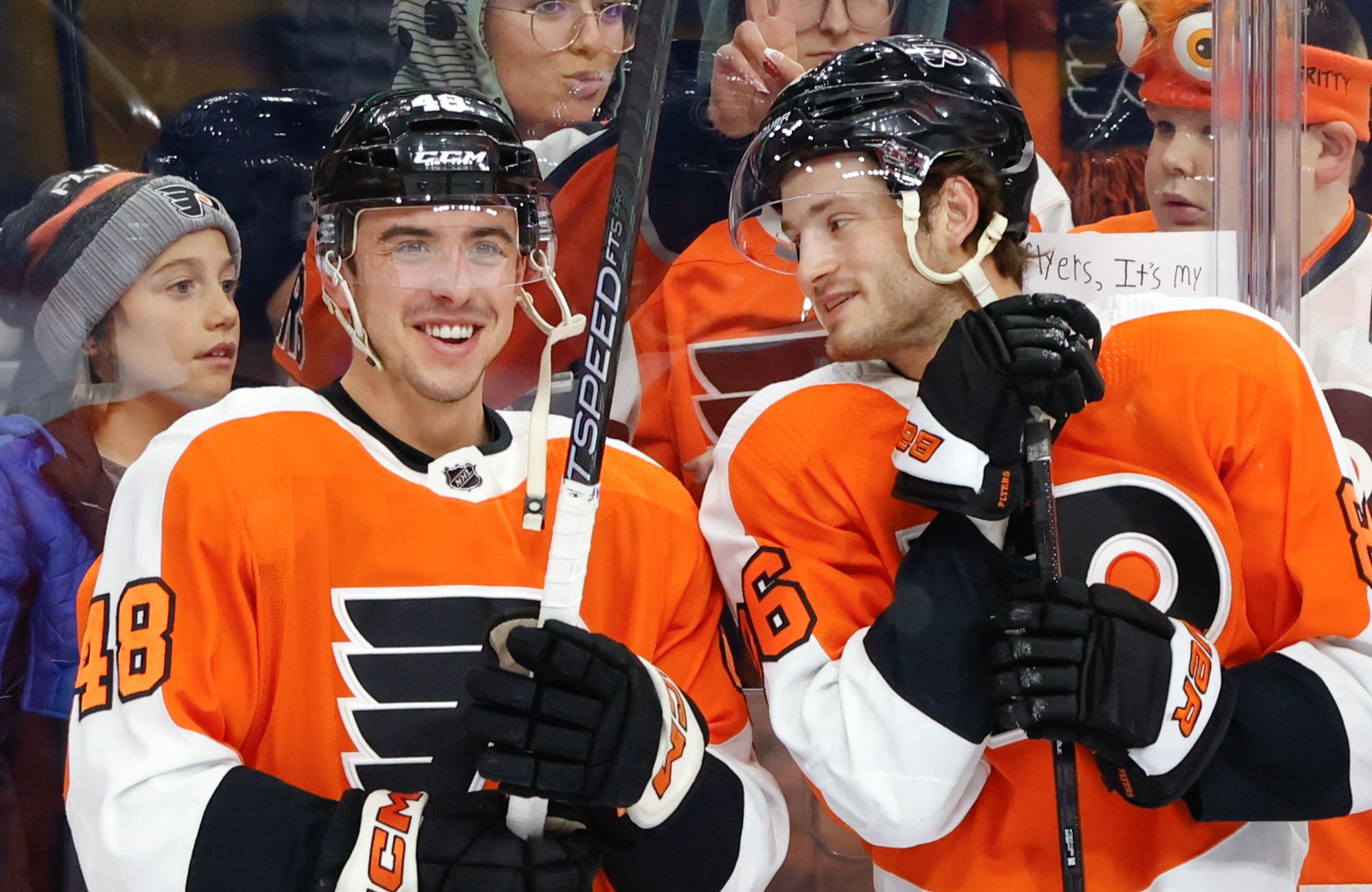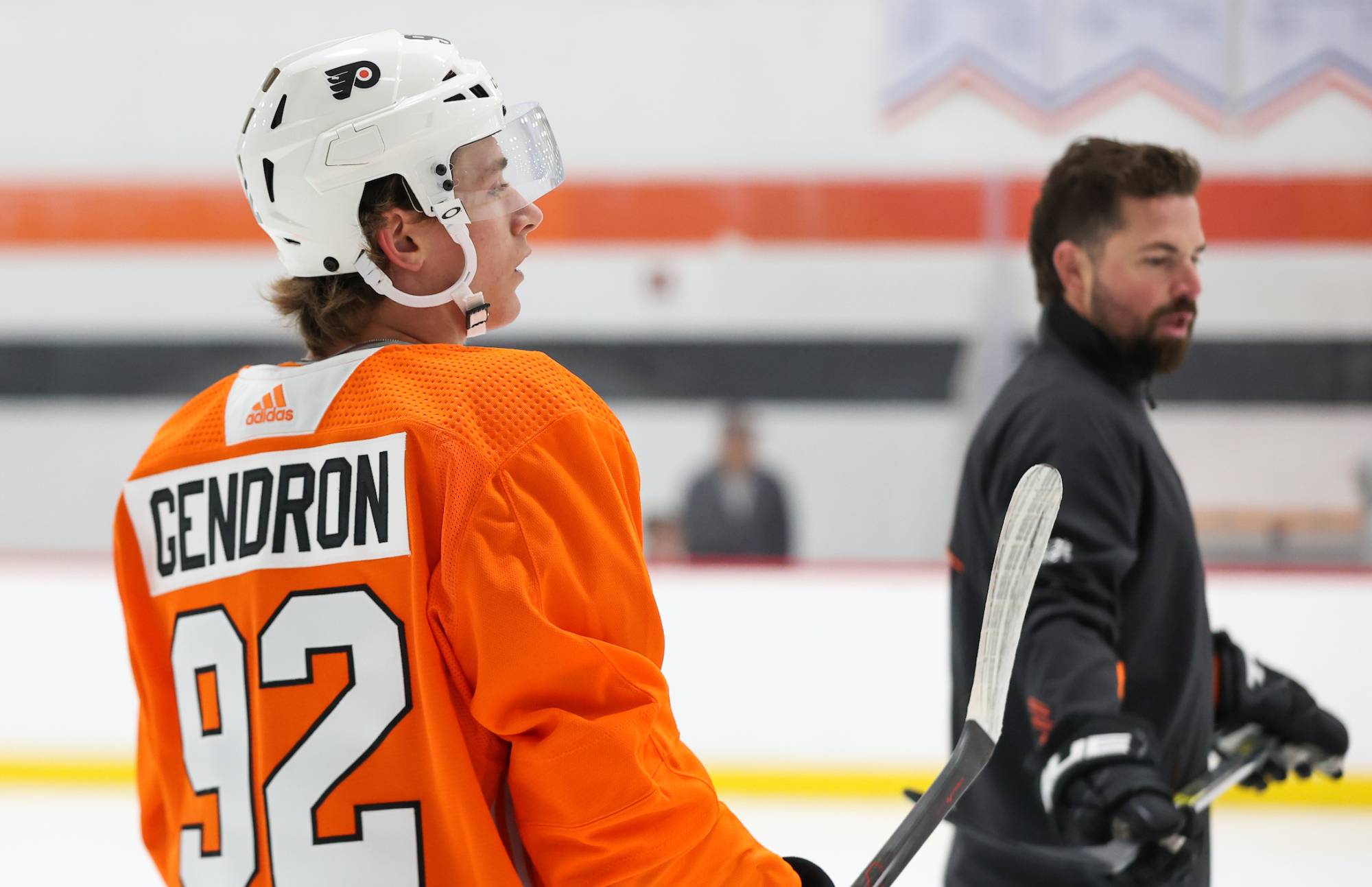One of the more polarizing Philadelphia Flyers of the 2013-2014 season so far has been Nicklas Grossmann. The usually steady Grossmann had a particularly rough month throughout January. Many fans and bloggers (including some of our own here at Broad Street Hockey) felt Grossmann might deserve to sit for a game or two; if not for his poor play, then perhaps for a chance to clear his head.
This came to a head before the Flyers’ last game before the Olympic break when head coach Craig Berube opted to scratch Erik Gustafsson, who had been playing well, in order to get Andrej Meszaros into the lineup. Many people took to twitter to voice their uncertainty, or downright objection, to sitting Gustafsson over someone like Grossmann or Luke Schenn.
This prompted Flyers beat writer Anthony San Filippo to write “a bit of a rant” in which he defends the decision to continue to play Grossmann. It is a good piece in which he makes some valid points. Among them:
Without getting into great detail here, the argument is Grossmann struggles to carry the puck out of his own end, turns over the puck and takes penalties. There are also complaints that he’s slow and that the things he gets credit for – like hits, blocked shots and pinning forwards along the boards – are not necessarily positive statistics.
…
Sure, we can use hits and blocked shots as some sort of measure, but those are often dismissed by the advanced math folks as more indicative of players who are playing too much in their own end and aren’t good with puck possession, and the numbers play out that the better puck possession teams are more successful.
…
[You]can’t expect a team to drive the play and possess the puck for 60 minutes.
Therefore, you have to anticipate that the other team is going to have the puck sometimes too. And when they do, you are going to want your team to be able to do what they can to get the puck back.
I think this is a very valid point by Anthony. Even the best possession team in the league (the Kings), “only” have the puck 56.1% of the time (using Fenwick close as a measure). So for that other 43.9% of the time, as Anthony indicates, well….you need to play some defense!
So if I were to sum up the two sides of the argument here:
- Blocked shots and hits are not necessarily positive statistics. If you are wracking them up, that means that you don’t have the puck and are likely getting outplayed.
You can’t have the puck the entire time, so when you don’t, a blocked shot or a hit is advantageous.
So all of this made we wonder, how many blocked shots and/or hits actually result from poor play (scenario #1 above) as opposed to “just playing defense” (scenario #2 above)? How many, to use Anthony’s words, come from turning the puck over or failing to clear the zone? I was particularly interested because I recently wrote an article about overrated and overused statistics, and I believe blocked shots and hits are among them. This could be an attempt to help quantify the argument (one way or the other).
So I took to NHL.com for the detailed box scores and grabbed every occurrence of Flyers’ blocked shots and hits for three games: the Flyers most recent two games, as well as a game during Grossmann’s particularly bad stretch. I chose the 1/12/2014 game against the New York Rangers in which he was minus-two, with four blocked shots, two hits, and four penalty minutes. I would have loved to do more games, but frankly, it’s a large work effort.
Then I went back through each of those games to actually watch how every single instance of a blocked shot or hit occurred. I did my best to watch all key events before and after the blocked shot or hit to try to adequately capture what led to it, and what became of it. I also took a look at every icing, because a bad icing can lead to additional blocked shots or hits as well.
The findings
Now I won’t include all of my notes in this article because that would be really long, but for a taste of the type of notes I took see below. You can find my full notes in a link at the bottom of this post. If you see a particular note that is very straightforward, it’s because nothing of note took place before or after it occurred.
| Period | Time | Event | Description | |
| 1 | 0:25 | STOP | ICING | Coburn with a terrible pass out of D zone, misses Couturier by a mile for icing. |
| 1 | 5:11 | BLOCK | COL #55 MCLEOD BLOCKED BY PHI #44 TIMONEN, Wrist, Def. Zone | Dump in, attempted clear by Mason, kept in by Colorado leads to Timonen blocked shot. |
| 1 | 5:39 | STOP | ICING | Couturier tips pass from his side of redline for icing. |
| 1 | 5:47 | BLOCK | COL #90 O’REILLY BLOCKED BY PHI #26 GUSTAFSSON, Wrist, Def. Zone | Icing leads to D zone draw. Faceoff win but L Schenn can’t clear, leads to shot. |
| 1 | 6:02 | BLOCK | COL #6 JOHNSON BLOCKED BY PHI #26 GUSTAFSSON, Slap, Def. Zone | Same as above. |
After completing all of my viewing, I went back and took note of who made mistakes directly leading to a blocked shot or hit, and how many times this occurred. For example, this would be an example of a “mistake” that directly led to a blocked shot (although it doesn’t necessarily have to be the same player’s blocked shot).
| 2 | 17:18 | BLOCK | COL #9 DUCHENE BLOCKED BY PHI #8 GROSSMANN, Wrist, Def. Zone | Grossmann gets puck in NZ, chips it up boards where it’s grabbed by Colorado who gains zone with possession for shot. |
Now, I must admit sometimes it’s difficult to gauge what is a true mistake and what isn’t. It can be a bit subjective. For example, if a defenseman is retrieving a puck after a dump-in and he has a forechecker right on his back, he needs to make a quick decision to probably wrap the puck up the boards one way or the other if he doesn’t have an easy outlet to his partner. That wrap attempt will frequently be knocked down, and potentially turn into the opponent’s possession. Is that the defenseman’s fault? Perhaps not. For the sake of this exercise, I included all of those attempts as “mistakes”.
After tallying it up, here are the players that made mistakes directly leading to additional blocked shots or hits:
| L Schenn | 6 |
| Grossmann | 4 |
| Streit | 3 |
| Couturier | 2 |
| Timonen | 2 |
| Simmonds | 1 |
| Hartnell | 1 |
| Lecavalier | 1 |
| Raffl | 1 |
| Rinaldo | 1 |
| Rosehill | 1 |
| Giroux | 1 |
Additionally, of the 24 mistakes that occurred over these three games, they resulted in 19 additional blocked shots and 3 additional hits (it only adds up to 22 because we had two occurrences of multiple players making mistakes on the same event). In total over these three games, the Flyers had 63 blocked shots and 71 hits.
This means that 30.1% of the blocked shots that the Flyers managed were the result of poor play. Only 4.2% of the hits that occurred were the result of poor play.
Full disclosure here, that it’s possible I made some counting errors. Especially when you start accounting for “mistakes” that led to multiple blocked shots and/or hits. I did my best however, so make of it what you will.
So what do I take away from this?
The first thing that I personally took away from this exercise as I was doing it was that a heck of a lot of blocked shots and hits occur organically, as the result of “just playing defense”. A player like Grossmann for example, used his shot blocking ability when his opponent gained the zone at no fault of his or his teammates’ to prevent a shot on goal time and time again.
At the same time however, I can’t help but notice that the three biggest culprits in my exercise were Luke Schenn, Nicklas Grossmann, and Mark Streit. They are the Flyers’ three worst puck possession defenseman among regulars (using Fenwick close and omitting Meszaros as a “regular”).
So while someone like Grossmann or Schenn may not directly turn the puck over and then notch another blocked shot for themselves; perhaps there is some truth to the idea that their inability to push play the other way is resulting in additional blocked shots or hits for them or their linemates.
All told, I think the truth lies somewhere in the middle. (For anyone unfamiliar with my writing, you may start to recognize I frequently occupy the middle ground.) I think Anthony is right that no team is going to possess the puck all the time, and that a player like Grossmann negates a lot of scoring changes by blocking shots or eliminating his man. My extremely small three game tape study, however, does make me wonder how inflated a statistic like blocked shots can be when 30% of them occurred as the result of poor possession play.
So you won’t catch me completely neglecting blocked shots or hits, I also think those stats alone don’t tell the whole story. So not unlike what I was trying to convey in my article a few weeks ago, it’s all about proper context.
***
Post-script: Excel file with all notes from the three games examined is below. Please note that this is a file that will automatically download to your computer.

